I must admit I was a bit leery about seeing the Mary Cassatt (1844-1926) exhibition at the Musée Jacquemart-André, fearing an overdose of saccharine paintings of babies and mothers, but I’m glad I went. I was pleasantly surprised by the quality of the works, only a couple of which veered toward the overly sweet, and even they were mostly saved by their genuine, hence forgivable, emotion.
Those babies – and the fact that Cassatt was a woman (and an American at that!) – may explain why, in spite of her great talent and popularity in the United States, she has been neglected in France (this is the first exhibition to be held here since her death), even though she lived and painted here for most of her life, was included in major Impressionist exhibitions in Paris and was considered a leading avant-garde painter in her time.
Born to a well-off family in Pennsylvania, Cassatt lived with her parents in Paris for a couple of years as a little girl and learned to speak French. Frustrated with the quality of art education in America, she returned to Europe after the Civil War to continue her studies and eventually settled in Paris.
Although she was trained as an academic painter, Cassatt wanted to break free from the constraints of tradition and quickly adapted to the latest styles and was adopted by like-minded artists. The influence of her friend and supporter Edgar Degas is evident in the painting “In the Loge” (1878) – the woman in the box is seen from an unusual angle and is not posing for a portrait but is stopped in action as if caught in a snapshot as she examines other theatre-goers through her opera glasses. The people in the boxes beyond – including a man who is staring at her through his own opera glasses – are out of focus, so to speak.
When you enter the exhibition at the Jacquemart-André, the first thing you see across the room is the magnificent “Little Girl in a Blue Armchair” (1877-78; pictured at the top of this page), illuminated by an almost shocking preponderance of blue. The little girl sits sprawled out on one of four matching blue seats, a dreamy expression on her face, while a lap dog sleeps contentedly on another. (Apparently, Degas helped with the painting of the background of this work.)
Cassatt seems to have had an affinity for the color blue, which is used so effectively in a number of other paintings here. In the pastel “Fillette au Chapeau” (c. 1911), for example, a little girl wears an enormous hat (was she playing dress-up?) of an intense blue. Only the face and hat are detailed; the rest of the work is squiggles of pink and pale blue.
Blue is used very differently in “Baby in Dark Blue Suit, Looking Over His Mother’s Shoulder” (c. 1889), one of the more moving paintings of mother and child, and in the lovely “Woman Bathing” (1890-91), obviously influenced by the Japanese prints that were so popular at the time.
Interestingly, since Cassatt, who – unusually for her time – never married, is considered a painter of “women’s subjects,” she painted mostly women and children not because they were the only models available to her, but because she felt that men were overrepresented in art and wanted to celebrate the “charm of womanhood” and the “sweetness of childhood.” Very much a career woman determined to make her own living and a firm believer in equal rights, Cassatt was not only an avant-garde painter but also a feminist.
Favorite

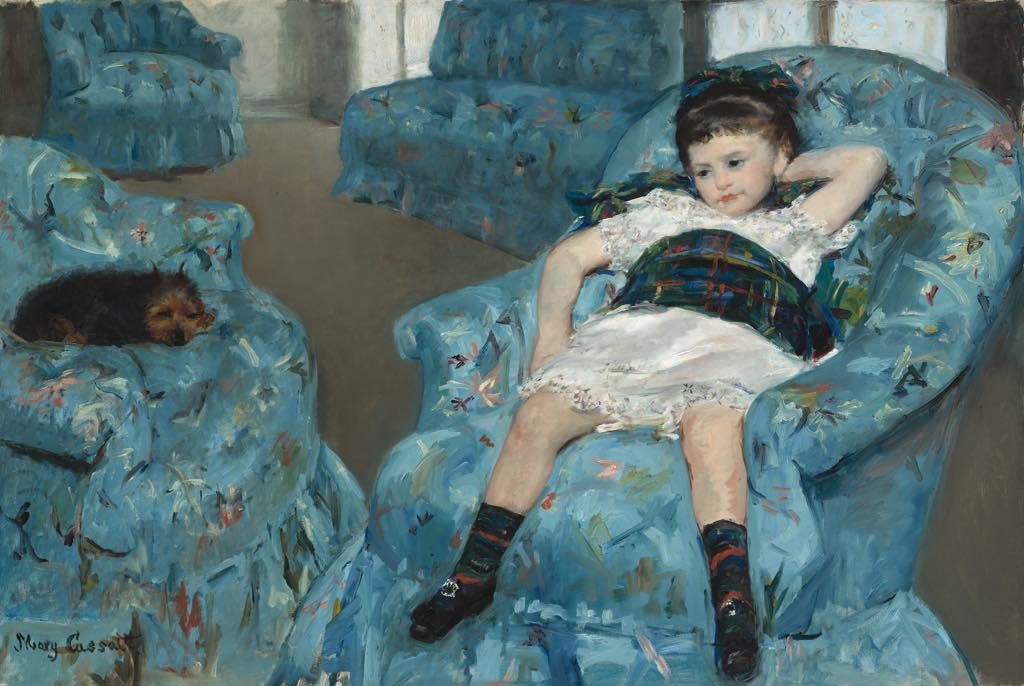
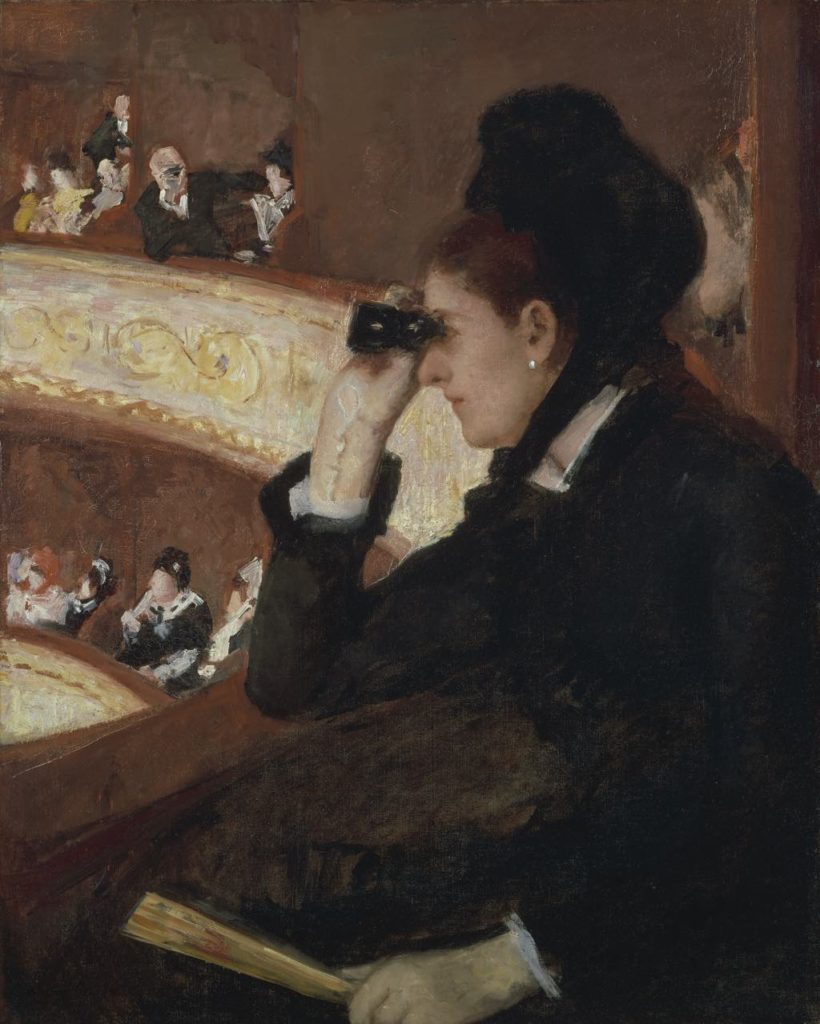
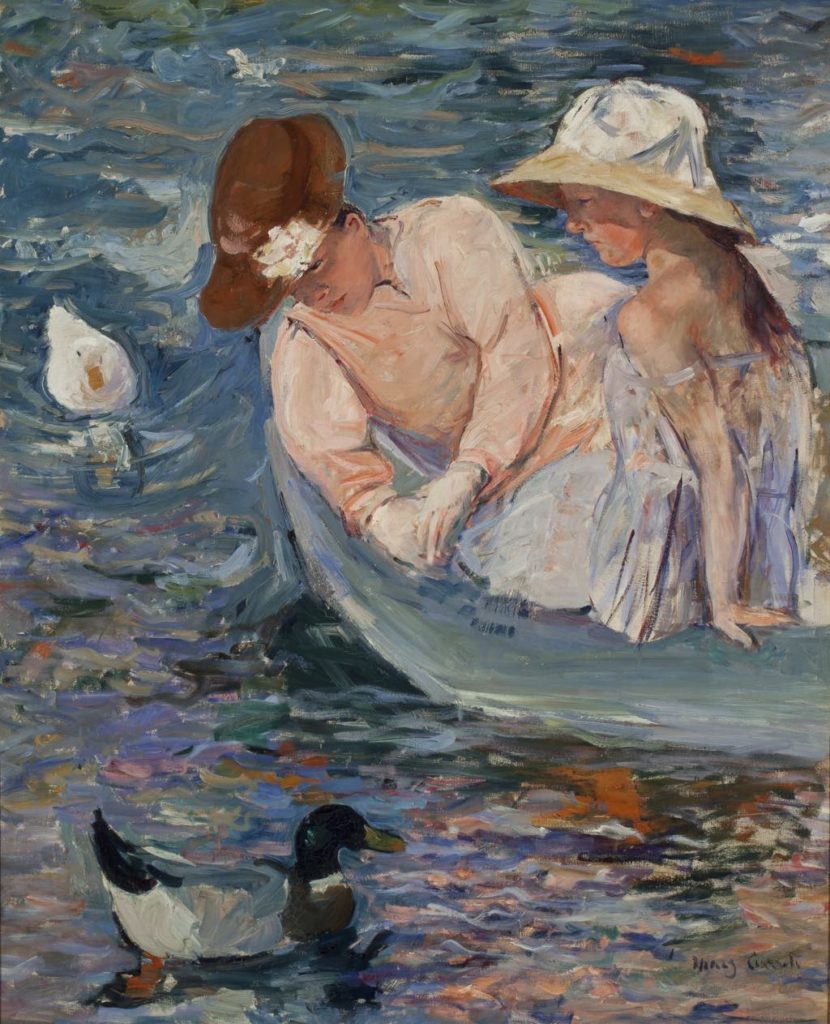
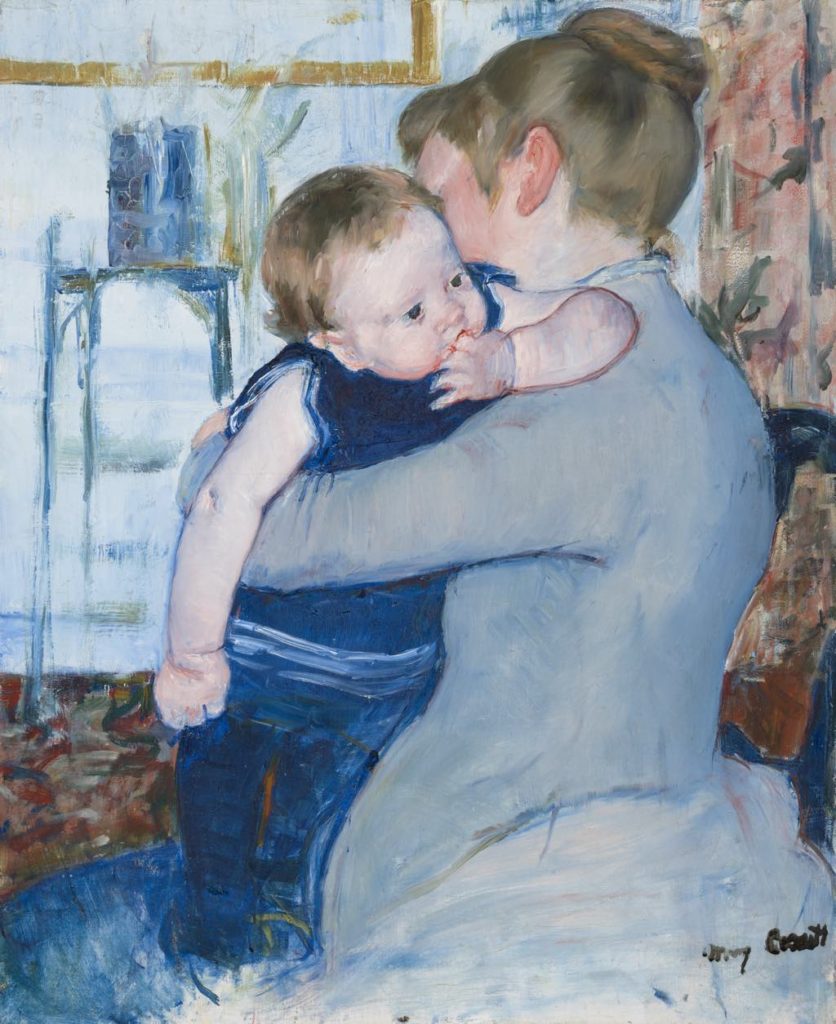
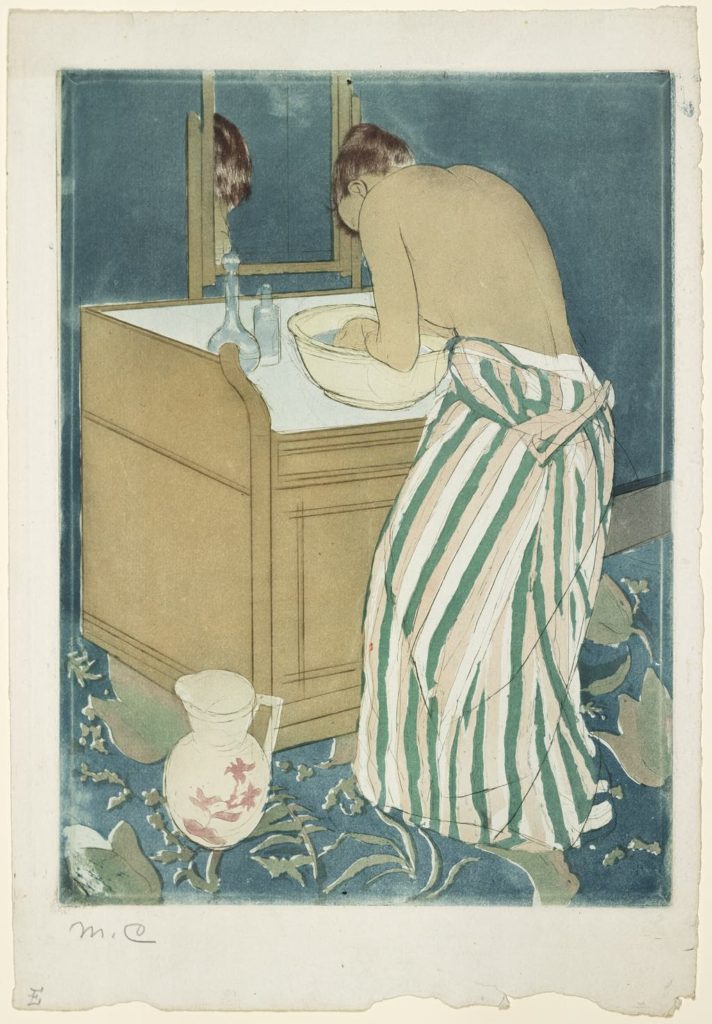
You are a breath of fresh air… expressive, perceptive and focused. Never cutsie and self-promoting.